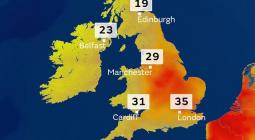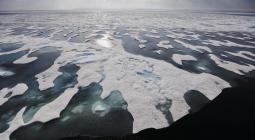Το 2018 το 4ο θερμότερο έτος και μια ακόμη απόδειξη ότι παγιώνεται η άνοδος της θερμοκρασίας.
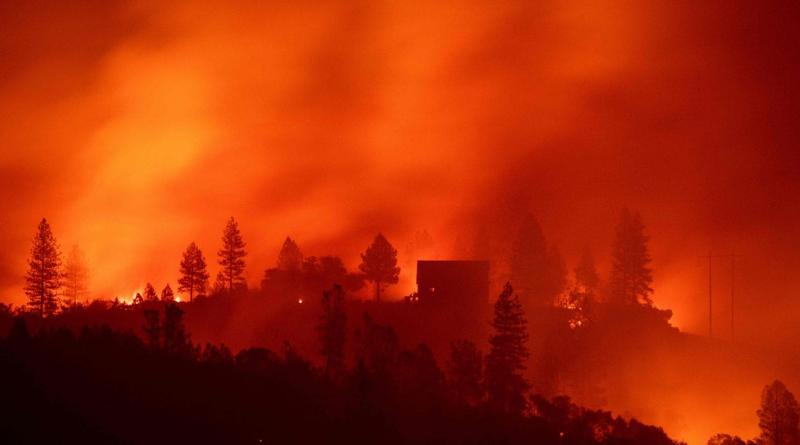
2018 was the fourth warmest year on record -- and more evidence of a ‘new normal,’ scientist group reports
The year was one in a string that have been a full degree Celsius, or 1.8 degrees Fahrenheit, warmer than temperatures in the late 19th century, the report found.
The year 2018 is likely to have been the fourth warmest year on record, a scientific group pronouncedThursday -- and joins three other extra-hot years since 2015 that suggest a leap upward in warmth that the Earth may never return from in our lifetimes.
The warmest year on record for the Earth’s land and oceans was 2016 -- by a long shot, thanks to a very strong El Nino event. That’s followed by 2017, 2015, and now 2018, said Zeke Hausfather, a research scientist with Berkeley Earth, which released the findings.
“2018 is consistent with the long term warming trend,” Hausfather said. “It’s significantly warmer than any of the years before 2015. There’s still this big bump up after 2014, and 2015, 2016, 2017, and 2018 are all in a class of their own.”
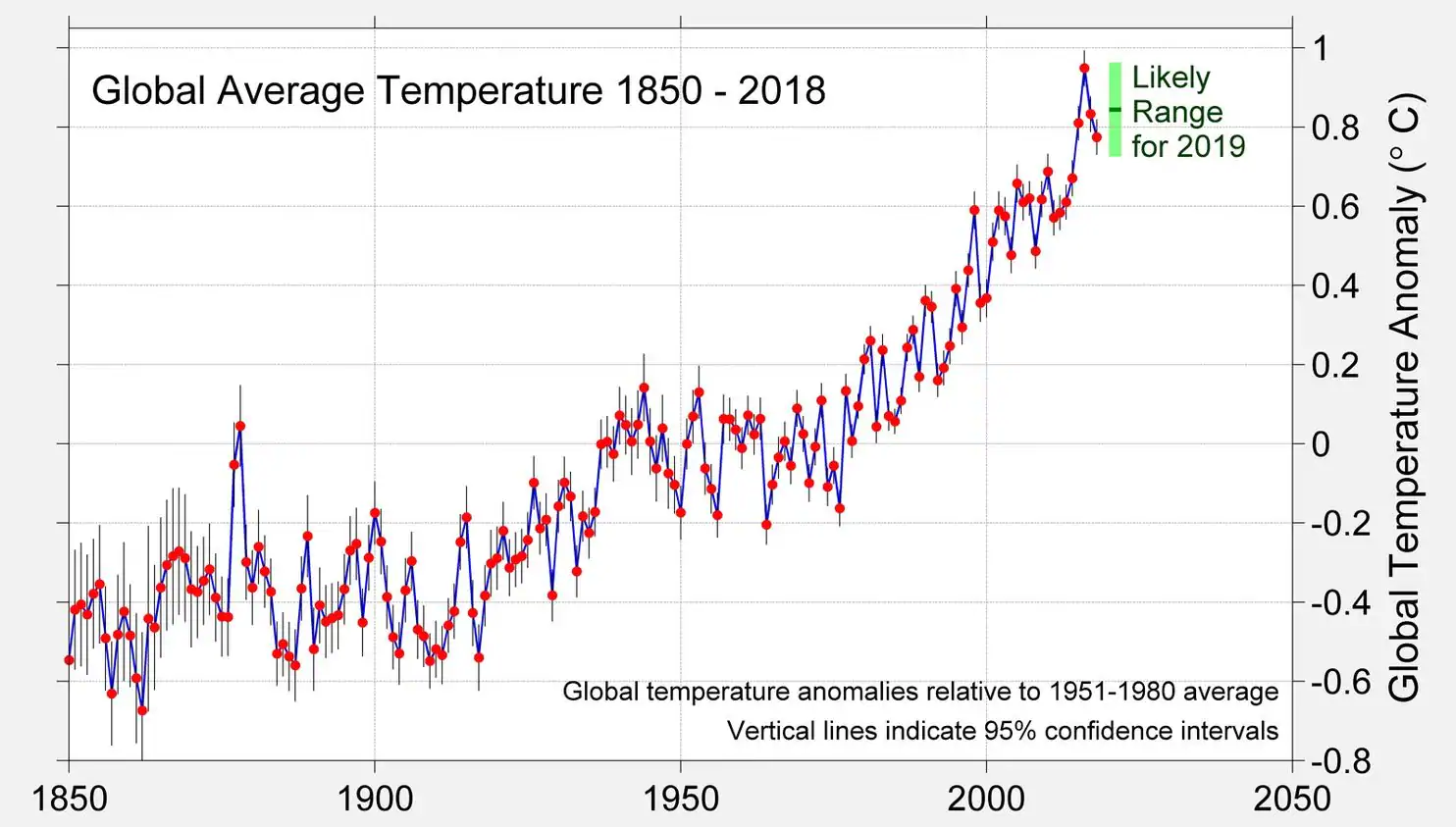
While expert groups have sometimes divided on such annual temperature rankings -- and not all assessments are yet in -- Berkeley Earth’s findings appear unlikely to be disputed.
The Copernicus Climate Change Service, a European Union body, has also proclaimed 2018 the fourth warmest year on record earlier this month.
And Kevin Cowtan, a researcher at the University of York who also keeps an influential temperature dataset, agreed with the ranking, though he noted by email that he is only able to track data through November of last year due to the U.S. government shutdown, leaving his assessment one month short at present.
“Our results to November clearly put 2018 in 4th place, significantly warmer than 2010 in 5th,” said Cowtan. “The 11 hottest years on record have all occurred since 2005.”
Amid the government shutdown the U.S.'s two top keepers of temperature records -- NASA and NOAA -- have not yet released their findings. Last year, both agencies released their assessments for 2017′s temperatures, which NASA called the second warmest and NOAA the third, on January 18.
Hausfather said a coordinated release had been planned for January 17 with his organization and the U.S. government agencies -- before the shutdown, that is. Once that happened, he said, Berkeley Earth decided to go ahead and release its own numbers.
In response to a request for comment, NOAA said that it would look into the state of the 2018 temperature release. Meanwhile, on Thursday NASA’s Gavin Schmidt, who heads the agency office that keeps the temperature record, tweeted that their release has been “indefinitely postponed” due to the shutdown.
But Hausfather said that based on where the other temperature datasets currently stand, with data through November and thus only one month remaining to add, it’s likely there will be no disagreement about the rankings this year by any party.
Indeed, NASA’s Schmidt had tweeted back in October that 2018 would surely be the 4th warmest year.
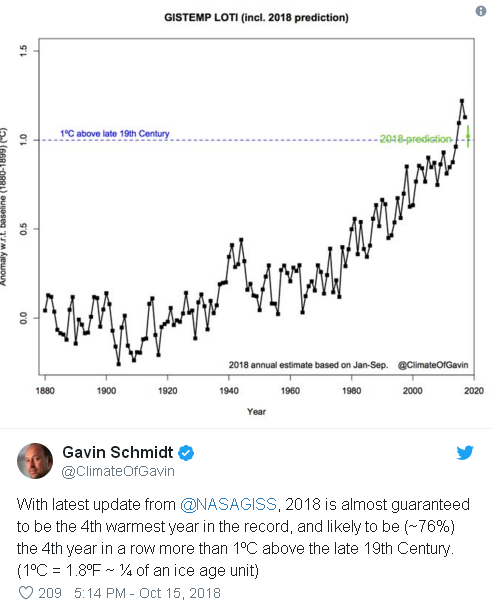
“At this point, it would be almost impossible for 2018 not to be the fourth warmest in all the records,” Hausfather said.
2018 was yet another year of suspiciously extreme weather events -- such as the devastating California wildfires -- and also extra hot summer temperatures in Europe.
29 countries had their hottest years on record, Berkeley Earth found, including European countries like France and Germany but also Middle Eastern nations like Oman and the United Arab Emirates.
Notably, Antarctica also saw its warmest year on record, the group found.

The year yet again featured an odd cold anomaly in the seas to the southeast of Greenland, which some scientists think may represent a slowing down of the “overturning” ocean circulation in the Atlantic. Clearly, this region is bucking the overall warming trend.
From a political and policy perspective, the last several extra warm years are highly significant. That’s because, as the tweet from NASA’s Schmidt above notes, they appear to be at or above a 1 degree Celsius, or 1.8 degree Fahrenheit, increase above so-called “preindustrial” temperatures, or temperatures from the later part of the 19th century.
In Berkeley Earth’s dataset, the last 5 years are all above 1C; in two other datasets the last four years are expected to be above that threshold, according to data provided by Hausfather. In the National Oceanic and Atmospheric Administration dataset, 2018 is trending slightly under it.
Either way, this matters because scientists have outlined increasingly dire consequences as soon as the Earth reaches 1.5 C or 2C, temperature targets that are both flagged in the 2015 Paris climate agreement.
The arrival of 1.5 degrees C -- 2.7 degrees F -- could happen in under 2 decades. In fact, it has in effect already happened for many land areas, since land surfaces are warming quicker than the ocean at this point. But the oceans are warming too -- they may have been the warmest on record in 2018.
Berkeley Earth projects that 2019 may well be warmer than every year so far except for 2016 -- and thus will once again be above 1 C.
“It’s unlikely at this point that we’ll have a situation where temperatures dip back below that, at least for the globally complete datasets,” said Hausfather. He termed the current temperature range -- which has seen more extreme heat events, major coral bleaching and death around the world, and alarming wildfires, among other climate-linked occurrences -- a “new normal.”
Hausfather himself, living in the Bay Area, said he has been personally affected.
“We have a 1 and a half year old baby,” he said. “Earlier this fall after the Camp Fire, when the air quality was worse in San Francisco than it was in Beijing, we had to stay inside, bought an air purifier, had to wear masks outside.”
“We’ve also seen some crazy extreme heat events," he continued. "It reached 100 degrees in San Francisco two weeks after the baby was born….and obviously none of us have air conditioning, it’s San Francisco. So in general we’ve certainly noticed that these extremes appear to have become more common.”
24 January 2018
Chris Mooney



